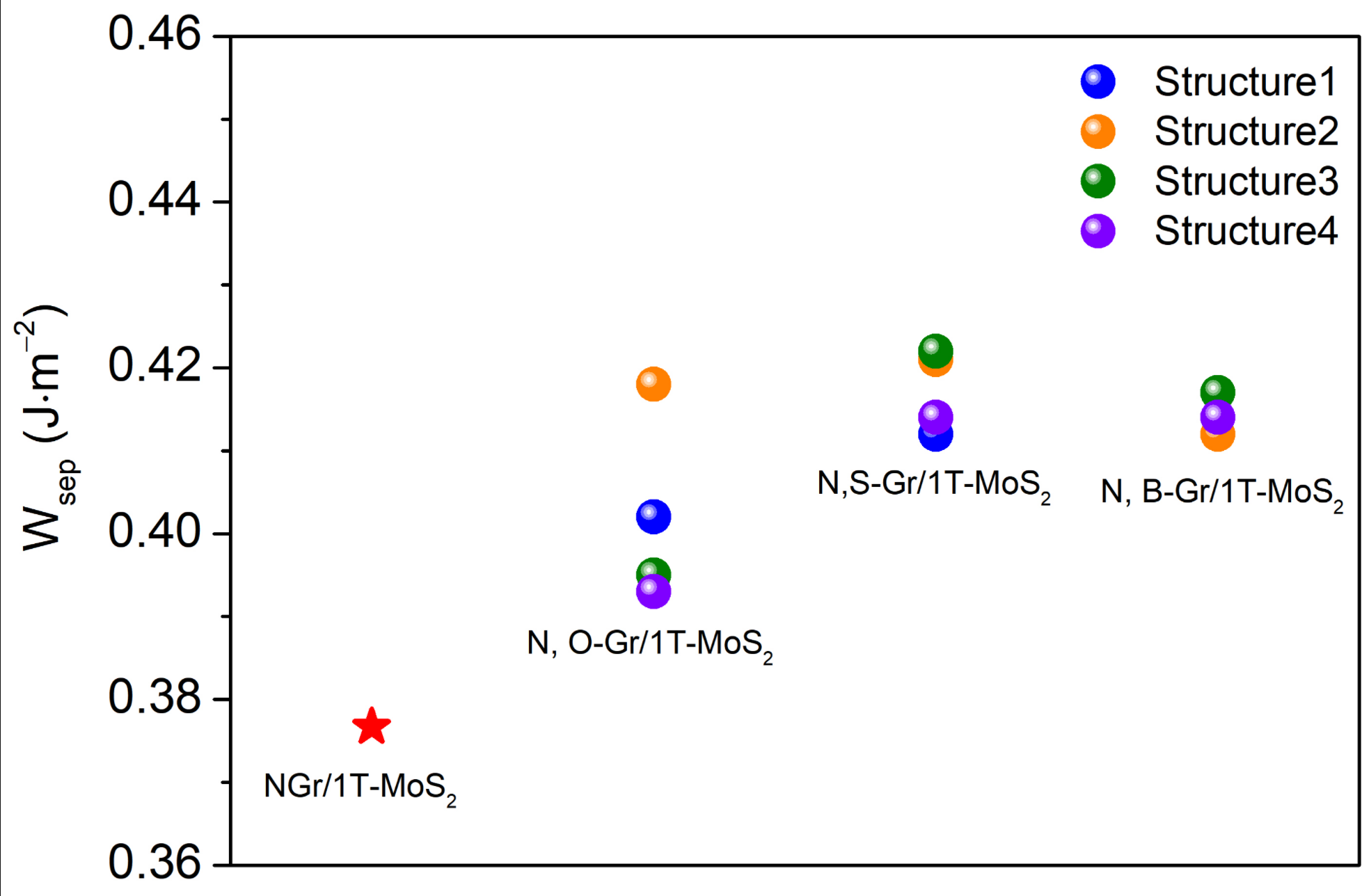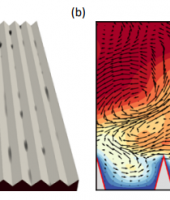Dual-element-doped graphene/2H(1T)-MoS2 composites as anode materials for K-ion battery
This project aims to investigate the effect of dual elements-doping on the K-ion storage behaviours in graphene/2H-MoS2 and graphene/1T-MoS2 composites (Gr/2H(1T)-MoS2). N-doped Gr/2H(1T)-MoS2 composites equip with the high capacity and excellent mechanical stability, which makes it a promising electrode material for K-ion batteries. However, K ions adsorption on N-doped Gr is relatively weak, which affects the effective storage of K ions. Recent experimental studies revealed that dual doping of N and another element (such as S, O or B) in graphene/hard carbon could increase K adsorption and enhance its structural stability during electrochemical cycles. Thus, we aim to introduce the dual elements-doping in Gr/2H(1T)-MoS2 to further optimize the electrochemical performance. This project is designed to fully reveal the effect of dual elements-doping on the structure, mechanical, electronic properties and electrochemical performance (such as K adsorption energy and diffusion kinetics) of Gr/2H(1T)-MoS2 composites. It is expected that the outcomes will provide a comprehensive understanding of the K storage mechanism in dual elements-doped Gr/2H(1T)-MoS2 composites.
Area of science
Energy Materials
Systems used
Magnus
Applications used
The Challenge
Despite the excellent electrochemical performance of MoS2/Gr composite, it still suffers from large structural change during K intercalation, which gives rise to its quick capacity decay. Although recent research showed that dual elements-doping could largely improve its capacity and cycling stability, the micro-mechanism cannot be revealed from experiments. Thus, this project is designed to simulate the K storage behaviour in dual elements-doped Gr/2H(1T)-MoS2 composites by using first-principles calculations.
The Solution
First, we compared the structural, electronic, and mechanical properties of MoS2/Gr electrode materials before and after dual elements-doping. Here, we chose N and S, N and O, and N and B to study the effects of dual-elements-doping. Next, K adsorption in hybrids was simulated, and the stable K adsorption sites were identified. Here, the K intercalation process was also unveiled. Then, we further studied K kinetic diffusion in hybrids, including diffusion paths and energy barriers. The theoretical capacity and K intercalation voltage in dual elements-doped Gr/2H(1T)-MoS2 hybrids were systematically investigated. Finally, through comparing K storage behaviours before and after doping, the optimization mechanism of dual elements-doping can be revealed.
The Outcome
The main difficulty of this project is the huge computational tasks since studies on K adsorption and kinetic diffusion in three dual-elements-doped Gr/2H(1T)-MoS2 hybrid involve a large number of simulations. The Pawsey Centre’s resources enable us to obtain the simulation results in a short time and ensure the smooth progress of simulations. Here, we would like to take this opportunity to thank the Pawsey Centre’s staff for their kind help and support.







